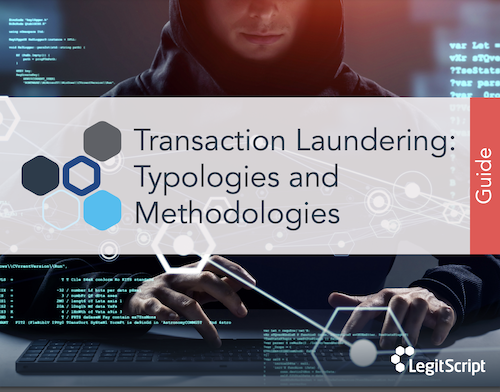Money Laundering vs. Transaction Laundering — What You Need to Know
Among fraudulent practices in payment processing, one of the most challenging is a deceptive tactic called transaction laundering, which is different from traditional money laundering. Keep reading to learn about money laundering vs. transaction laundering.
Money Laundering vs. Transaction Laundering
Money laundering is the process of illegally concealing the origin of money, obtained from illicit activities such as drug trafficking, corruption, embezzlement, or gambling, by funneling it into a legitimate source.
Transaction laundering is an activity through which bad actors, unknown to a merchant acquirer, process illicit or problematic payment transactions through the acquirer using a known and ostensibly innocuous merchant. Like money laundering, transaction laundering is often used for activities such as illicit drug sales and gambling but also counterfeit sales, fraud, scams, identity theft, and more.
What Is Money Laundering?
Money laundering is essentially the conversion of illegally obtained funds into legal ones. This strategy is used by bad actors to hide the source of their income and profits.
According to FinCEN, the three stages of money laundering typically include placement, layering, and integration.
- In the placement phase, bad actors will generally place their illicit funds into a legitimate financial institution or business to mask its true origin.
- In the layering phase, they will break up these funds into smaller amounts before transferring them between different jurisdictions or institutions in an attempt to displace their trail.
- Finally, in the integration phase, they will use complex shell companies or other mechanisms to make it challenging for law enforcement officials to trace these funds back to their original source.
A type of money laundering using cryptocurrency is called tumbling or mixing. It involves the use of a third-party service that accepts “tainted” crypto payments, mixes them with a large pool of payments, and then allocates a new, “laundered” payment to a destination address.
What Is Transaction Laundering?
While money laundering concerns itself with obscuring the source of funds, transaction laundering is about obscuring the source of a payments transaction. Bad actors deliberately misrepresent themselves as legitimate merchants in order to process credit card payments without detection. This generally occurs in the commercial online space.
At a high level, transaction laundering is a way to game the payments compliance system. The illicit merchant obtains a merchant account for a seemingly innocuous business, then uses it to process risky transactions for the true underlying operation. Bad actors do this because, although there are many ways to process payments online, credit cards are still the gold standard and the easiest payment method for the average customer.
In many ways, transaction laundering is analogous to more traditional forms of money laundering, where a front company posing as a genuine business isn’t really selling anything, and the payments it takes are actually for something else.
The increased volume and speed of e-commerce have given rise to frictionless onboarding, which enables people to obtain merchant accounts quicker, with less information about them and their business required upfront to get started. Although this is good for people who are looking for a quick and painless way to get set up with selling online, it can increase the risk of abuse through transaction laundering.
Learn More About Transaction Laundering
Transaction laundering is a complex and notoriously difficult problem to solve. Learn more about how it works in this in-depth guide, Transaction Laundering: Typologies and Methodologies. This resource offers a deeper dive into how transaction launderers operate, and how they adapt to perpetuate their crime. You’ll learn about common typologies and associated risk factors, evolving transaction laundering methodologies, and key principles you can implement to interrupt and prevent transaction laundering.
